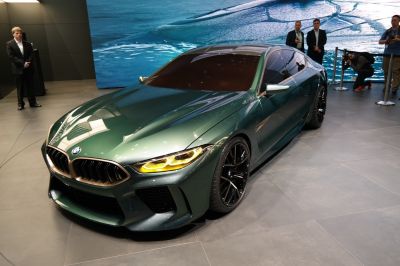 1993 Jaguar XJ220 Dimensions, Size & Specs
1993 Jaguar XJ220 Dimensions, Size & SpecsMeasurements of the 1993 Jaguar XJ220, engineered for optimal performance and comfort
| Dimensions | |
|---|---|
| Length: | 4930 mm194.1 in16.2 ft |
| Width: | 2000 mm78.7 in6.6 ft |
| Width (Opened Mirrors): | 2220 mm87.4 in7.3 ft |
| Height: | 1150 mm45.3 in3.8 ft |
| Weight Specifications | |
| Curb Weight: | 1350 kg2976 lbs |
| Tire Specifications | |
| Rims Sizes: | 18-inch rims:
|
| Tire Sizes: |
|
The Jaguar XJ220 is an iconic supercar produced from 1992 to 1994, representing the pinnacle of Jaguar's engineering and design in the early 1990s. This two-door coupe boasts a sleek and aerodynamic silhouette, measuring 4930 mm (194.1 inches) in length, making it a substantial presence on the road. Its width spans 2000 mm (78.7 inches), expanding to 2220 mm (87.4 inches) when the mirrors are opened, which underscores its wide stance and stability at high speeds. The height of the XJ220 is an impressively low 1150 mm (45.3 inches), contributing to its aerodynamic efficiency and aggressive posture. Weighing in at a curb weight of just 1350 kg (2976 lbs), the XJ220 balances lightweight construction with robust performance, allowing it to reach exceptional speeds and handling characteristics for its era. The car is equipped with distinct wheel and tire combinations geared for high performance: front rims sized at 14J x 18 and rear rims at 9J x 17, paired with wide tires dimensions of 345/35 ZR18 at the rear and 255/45 ZR17 at the front. These specifications reflect the car's focus on optimized grip and road precision, emphasizing the XJ220's supercar credentials. Overall, the Jaguar XJ220 combines striking dimensions and engineering finesse, making it a standout coupe of its generation highly regarded among car enthusiasts and collectors worldwide.
Discover the standout features that make the 1993 Jaguar XJ220 a leader in its class
Have a question? Please check our knowledgebase first.
The Jaguar XJ220, produced between 1992 and 1994, boasts impressive exterior dimensions tailored for high performance and striking aesthetics. It measures 4930 mm (194.1 inches) in length, which provides a long and streamlined silhouette characteristic of supercars. Its width is 2000 mm (78.7 inches) without mirrors, expanding to 2220 mm (87.4 inches) when the mirrors are included, ensuring a wide stance on the road. The height of the XJ220 is 1150 mm (45.3 inches), contributing to its low-profile, aerodynamic design. These dimensions collectively give the XJ220 a purposeful and sleek appearance suitable for its top-tier speed and agility.
Compared to other supercars from the early 1990s, the Jaguar XJ220’s width of 2000 mm (78.7 inches) and height of 1150 mm (45.3 inches) are quite competitive. Its width including mirrors, 2220 mm (87.4 inches), is wider than many contemporaries, which usually hover around 1900-2000 mm without mirrors. This additional width helps the XJ220 maintain stability at high speeds. The low height of just 1150 mm places it among the lower-riding supercars, enhancing aerodynamic efficiency and reducing drag. This combination of width and height gives the Jaguar XJ220 a substantial road presence while maintaining the sleekness necessary for its performance class.
The curb weight of the Jaguar XJ220 is relatively light for a supercar of its complexity and size, coming in at 1350 kg (approximately 2,976 lbs). This lightweight construction is a key factor in the car's outstanding performance metrics. The lighter weight enhances acceleration, braking, and handling, enabling the XJ220 to reach its top speed of around 350 km/h (217 mph) and achieve rapid 0-100 km/h times. The combination of advanced materials and engineering kept the weight down without sacrificing structural integrity or safety, thus allowing drivers to experience both speed and agility without excess bulk.
The Jaguar XJ220 is outfitted with highly specialized tires and rims designed to optimize grip and performance. The front tires measure 255/45 ZR17 fitted on 9J x 17 rims, while the rear tires are substantially wider at 345/35 ZR18 mounted on 14J x 18 rims. This staggered setup with larger rear tires helps maximize traction given the car’s rear-wheel-drive layout and powerful turbocharged V6 engine. The wide rim and tire sizes improve cornering stability, road handling, and braking performance, which are essential for high-speed driving and maintaining control at the limits of the car’s capabilities.
Fitting the Jaguar XJ220 into a standard garage depends on the garage dimensions. The XJ220’s length of 4930 mm (194.1 inches) and width with mirrors of 2220 mm (87.4 inches) make it a bit larger than many standard vehicles. A typical standard garage is about 2438 mm (8 feet) wide and 4877 mm (16 feet) deep, which means the width of the XJ220 challenges the garage width, especially when opening doors or mirror adjustments. The height of 1150 mm (45.3 inches) is generally not an issue, being quite low. Owners might require a slightly wider garage or need to fold mirrors (if possible) and park carefully to accommodate this iconic supercar.
The Jaguar XJ220 does not have a direct predecessor in terms of production models, as it was a landmark vehicle incorporating much of the brand’s concept car innovations from the late 1980s. Compared to the pre-production concepts like the Jaguar XJ220 concept, the production model retained similar dimensions with minor adjustments to meet safety and performance standards. Its length and width remained large to accommodate the powerful drivetrain and aerodynamic design. Its futuristic low height and wide stance set it apart from typical Jaguars before it, making it significantly different in terms of size and sporty proportions compared to any prior Jaguar luxury or sport models.
The Jaguar XJ220 is broadly comparable in size to contemporaries such as the McLaren F1 and Ferrari F40, though there are differences reflecting design philosophies. The length of the XJ220 at 4930 mm (194.1 inches) is slightly longer than the Ferrari F40 (4475 mm) but roughly in line with the McLaren F1 at around 4510 mm. The width of the XJ220 at 2000 mm (78.7 inches) is also wider than the F40’s 1972 mm but similar to the F1’s 1820 mm width, though with mirrors the XJ220 is noticeably wider (2220 mm). The height of the XJ220 at 1150 mm is comparable to these rivals, all emphasizing low-profile aerodynamics. Overall, the XJ220 stands out for its longer and wider stance, contributing to stability, a key trait in its high-speed capability.
Key design features of the Jaguar XJ220 directly influencing its size and aerodynamic performance include an extremely low-slung body with only 1150 mm (45.3 inches) of height, long wheelbase, and wide track. The car’s streamlined shape with smooth curves reduces drag and enhances stability at high speeds, necessary for reaching its 350 km/h (217 mph) top speed. The wide body accommodates large tires (up to 345 mm width) that improve grip but also increase the overall width. Additionally, the XJ220’s height is minimized to manage airflow, while large air intakes and rear spoilers help with engine cooling and downforce, balancing its size with performance demands.
The Jaguar XJ220 features a two-seat coupe configuration typical of supercars with a mid-engine layout. Despite its relatively long length of 4930 mm (194.1 inches), the interior space is optimized mainly for driver and passenger comfort rather than cargo or rear seating. The low height of 1150 mm (45.3 inches) limits headroom somewhat but it's offset by the car’s wide cabin, helping provide a snug yet supportive seating position. Rear space is virtually nonexistent due to the mid-mounted engine and drivetrain, emphasizing performance over practicality. The focus is on driver engagement and ergonomics within a compact yet sporty cockpit.
The Jaguar XJ220’s larger dimensions—specifically its length of 4930 mm (194.1 inches) and width of 2000 mm (78.7 inches)—affect its practicality in daily driving. While its size grants high-speed stability and a commanding road presence, it can be challenging maneuvering through tight urban environments, narrow streets, or parking in compact spaces. Compared to smaller supercars, the XJ220 offers less convenience for everyday errands, amplified by its low ground clearance and minimal cargo space. However, for enthusiasts, the trade-off between size and superb aerodynamic design, engine space, and performance outweighs daily usability concerns.
Discover similar sized cars.

| Production: | 2017 |
|---|---|
| Model Year: | 2017 |
| Length: | 4980 mm196.1 in |
| Width: | 2224 mm87.6 in |
| Height: | 1212 mm47.7 in |
